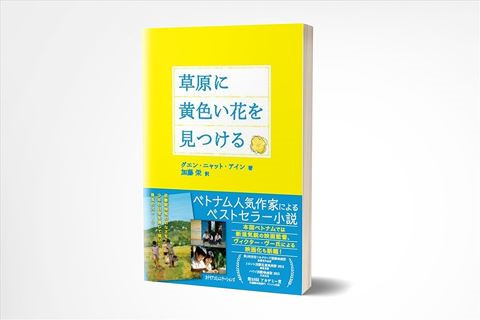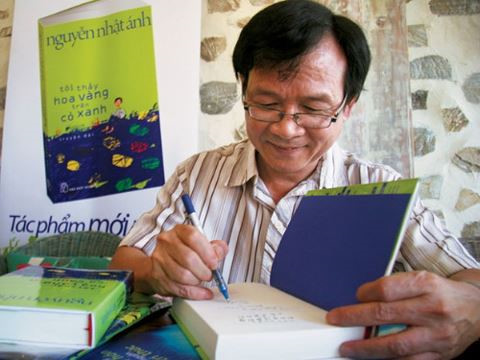
The Vietnamese novel ‘Yellow Flowers on the Green Grass’ (Toi Thay Hoa Vang Tren Co Xanh) by Nguyen Nhat Anh, has been published in Japan, according to Youth Publishing House.

The novel was translated into
Japanese by Prof Kato Sakae, who previously translated the Japanese version of
Anh’s novel "Mat Biec” (Deep blue eyes).
Prof Kato Sakae said one of the highlights of Nguyen Nhat Anh's novel is that
the characters are invested with such unique qualities, that even when the
novels are put down, they still appear vividly in the readers' minds.

Yellow Flowers on the Green Grass’
tells the story of deprived childhood in a rural village with 81 chapters which
function as 81 short stories.
The story was adapted into a movie by
Vietnamese-American director Victor Vu in October 2015,
receiving praise from film experts and readers.
The film is now screening at cinemas
in Japan.
Prof Kato Sakae hopes that Japanese
readers will find illuminating perspectives of Vietnam’s society and culture
through both the film and novel.
Source: VOV
With an increasingly vibrant and widespread emulation movement aimed at building cultured residential areas and cultured families, Yen Thuy District has been making steady progress toward improving both the material and spiritual well-being of its people, while fostering a civilized, prosperous, beautiful, and progressive community.
Once lacking recreational spaces and community facilities, Residential Group 2 in Quynh Lam Ward (Hoa Binh City) has recently received attention for the construction of a new, spacious, and fully equipped cultural house. The project followed the model of state support combined with public contributions in both labor and funding.
The "All people unite to build cultural life" movement, which has been effectively integrated with Kim Boi district’s socio-economic development goals, is fostering a lively spirit of emulation across local residential areas, hamlets, villages, public agencies, and enterprises. In addition, through the initiative, traditional cultural values are being preserved and promoted, while community solidarity and mutual support in poverty reduction and economic development are being strengthened.
A working delegation of the Hoa Binh provincial People’s Committee led by its Permanent Vice Chairman Nguyen Van Toan on June 11 inspected the progress of a project to build the Mo Muong Cultural Heritage Conservation Space linked to tourism services in Hop Phong commune, Cao Phong district.
Born and growing in the heroic land of Muong Dong, Dinh Thi Kieu Dung, a resident in Bo town of Kim Boi district, in her childhood was nurtured by the sweet lullabies of her grandmother and mother. These melodies deeply imprinted on her soul, becoming an inseparable part of her love for her ethnic group's culture. For over 20 years, this love for her hometown has driven Dung to research, collect, and pass down the cultural values of the Muong people to future generations.
In the final days of May, the Ethnic Art Troupe of Hoa Binh Province organized performances to serve the people in remote, mountainous, and particularly disadvantaged areas within the province. These were not just ordinary artistic shows, but they were the meaningful journeys aimed at spreading cultural values, enhancing the spiritual life of the people and contributing to the preservation of ethnic minority cultural identities.




